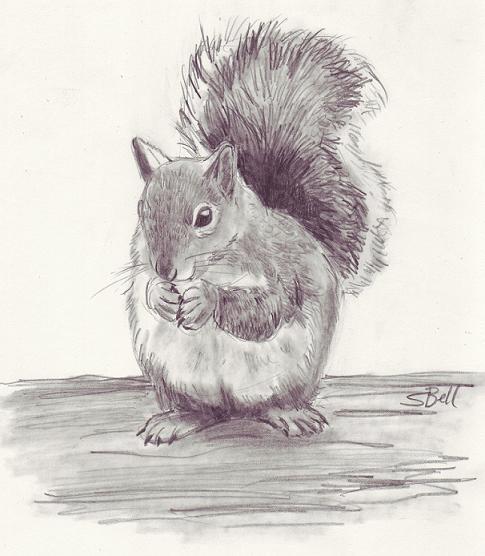
I love drawing animals, especially the furry ones. If you want to draw a furry animal, try sketching the squirrel below.
What You’ll Need:
2B Pencil
Tortillons (for blending)
Bristol Paper – (This paper holds up very well to the blending technique we’ll be using)
Erasers, including a Kneaded Eraser
How To Start:
When drawing animals, it’s helpful to have an example to follow instead of drawing it from memory. Part of learning to draw involves changing the incorrect patterns you already have established in your mind to the correct ones, and the way to do that is to look at something to see how it really is.
To begin, start by sketching the basic shapes you see. I use these shapes to helps determine where the drawing should go and how big it should be. Basic shapes include circles, triangles, squares, ovals, etc.
Double-check your shapes to make sure you have the right PROPORTIONS (the size of something compared to the size of something else). You can mark a piece of paper with your reference measurement. Here, I marked the length of the squirrel’s head. Note that the distance from the top of his head to his nose is about the same length as the distance from his nose to the top of his foot. This same distance (top of head to nose) is also the same distance from the top of his head to the top of his tail.
You’ll also see that the width of the squirrel’s body is about 1 ½ times our reference measurement (top of head to nose), and the width of his tail is just a little more than our reference measurement.
All set with the basics of the squirrel? Does it fit well on the page?
Next, add more definite lines to your drawing (straight and curved), making sure they connect with each other in the right places. Notice that the left side of the squirrel’s tail seems to connect with the center of it’s head, and the right side connects with the middle of the right side of his body. The line for the left side of the body connects to the middle of the left side of his head. His front paws are touching his nose/mouth. There is a space between his back paws.
Now that you have your squirrel on the page, let’s make him look more realistic. To draw animals with fur, add overlapping lines for the fur, making sure your lines are going in the same direction the fur is going. Short lines = short fur, long lines = long fur. The fur on the squirrel’s head and back is very short, so we’ll use very short lines. These lines can (and should) overlap each other, just as the fur does.
The fur under his front paws is longer, so use longer lines. Because this fur is white, however, you’ll want to draw fewer lines. Too many lines will make it seem as if it were a darker color.
The longest fur is on the squirrel’s tail, so these will be your longest lines. Here your lines will go outward. Remember drawing a sun with a circle in the center and the rays going all around it? The fur on the squirrel’s tail follows a similar pattern, going outward like the rays of the sun. Where the fur is darker, add more lines; where it is lighter, add fewer lines.
Now that your squirrel has a good furry coat for the winter, use a tortillon to lightly “color” it in. Hold the tortillon as you would a pencil with the pointed tip on the paper. Gently rub the tip over your squirrel and fill in your drawing. Don’t rub too hard, as you don’t want to lose the details you just created. If you find certain areas of your drawing are now too dark, use the kneaded eraser to pick up some of the graphite. You can shape this eraser by pulling it, so if you have a small area to change, make your eraser just as small.
Contrast between the lights and darks of your drawing will enhance the look of it. Be sure to include the contrasts in this squirrel: the white fur on the squirrel’s tail and belly versus the dark shadows where the tail and body meet and where the back paws and body meet.
Great job! You did it! You are well on your way to drawing animals. You can find other pictures to practice with in books or magazines, or you can use your own photographs.

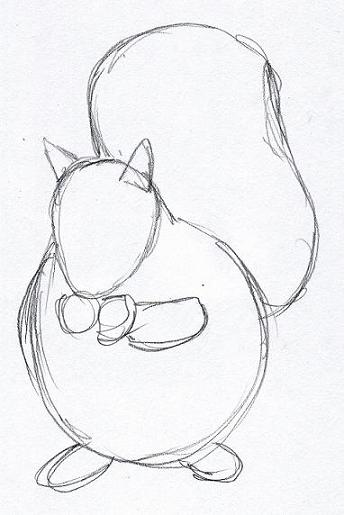
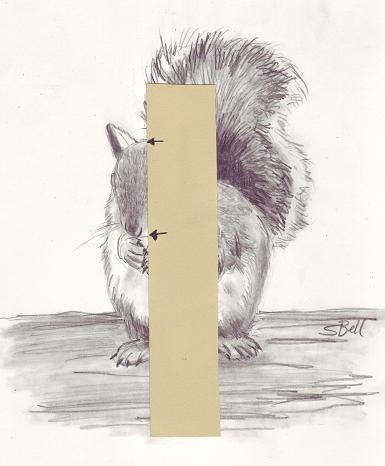
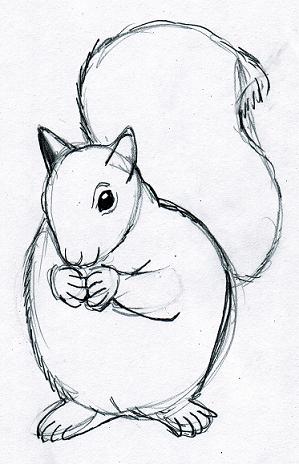
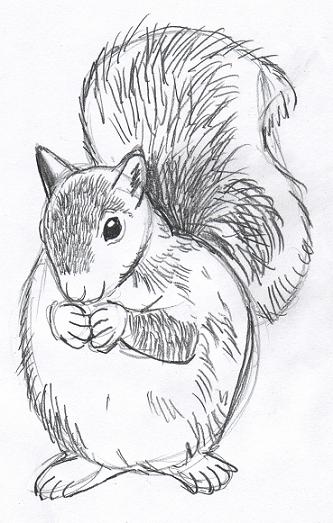
hi
Hi Jasmine!
it’s really incredible….I am teacher and need some ideas to do so… it,s vry helpful for me… thanks a lot… 🙂
I’m planning to use this with a small group of 7 – 12 yr-olds at Hagerman National Wildlife Refuge’s Youth First program, Nov. 7. I will also post your website as it is so helpful in teaching young naturalists to sketch.
Thanks, Ginger! 🙂
OMG!! I loved doing this! It was so fun. I am only 11 years old and I was able to do it and it turned out great. Thank you! The step by step instructions were quite handy. Thanks again!!
Thank you so much! The steps are very helpful.